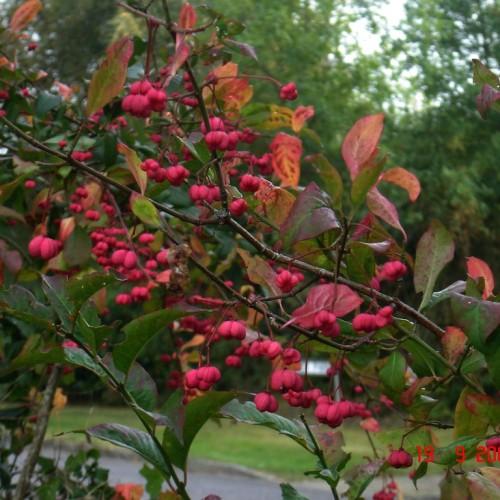
spindletree
Euonymus bungeanus
Cycle:
Perennial
Watering:
Average
Hardiness Zone:
4 - 8
Flowers:
Flowers In Spring
Sun:
Full sun,part shade
Fruits:
Fruits Ready In Fall
Leaf:
Yes
Growth Rate:
Low
Maintenance:
Low
Drought Tolerant:
Yes
Salt Tolerant:
Yes
Thorny:
Yes
watering
Spindletree (Euonymus bungeanus) should be watered every 3-5 days and should receive about 1 inch of water each time. It can be watered with either a regular watering can or with a hose set to a light flow. During periods of extreme heat, the watering frequency should be increased to every 2-3 days. You should avoid overwatering and take care when providing water as the leaves are relatively delicate and can be easily damaged by too much water. Additionally, the soil should be allowed to dry out slightly between waterings.
sunlight
Spindletree (Euonymus bungeanus) thrives in full sun conditions, as this is the type of light required to produce its colorful fruits. The amount of sunlight needed by this species will depend on the climate in which it is grown. In warmer climates, this plant will need at least 6-8 hours of direct sunlight per day, whereas in cooler climates, 3-4 hours of daily sunlight should be sufficient. For spindletree, the best time of day to get all this sunlight is in the late morning to the early afternoon hours if it's in a very hot region and all day in a moderate climate. To ensure that the plant is receiving adequate sunlight, it is important to rotate the pot or container every week or 2 so that it is exposed to the light. Also, it should be kept away from any nearby trees or other structures that could potentially block its sunlight.
pruning
Spindletrees should be pruned twice a year, in early spring and late summer. In early spring, prune back any dead/damaged shoots or branches, as well as any overly long growth. This will help promote healthier growth and reduce disease. In late summer, prune for shaping and to direct new growth as desired. Make sure not to prune too much as it can reduce the plant's flowering potential. Use pruners to make clean, sharp cuts at a 45-degree angle. Spindletrees respond well to pruning and tend to be hardy plants, so don't worry about over-pruning.
